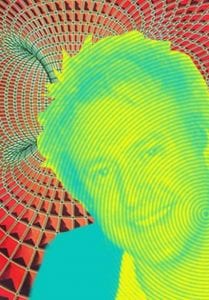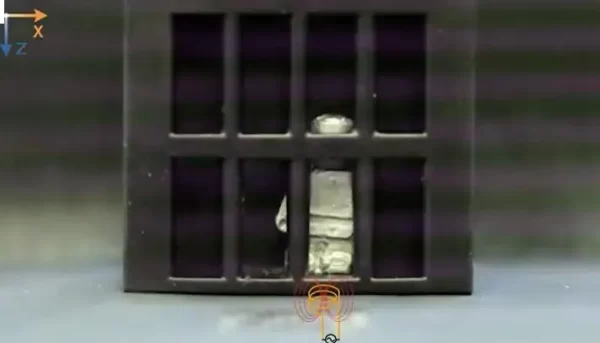Did Chinese Scientists Build A ‘Terminator 2’ Style Liquid Robot?
How many times do we have to flirt with disaster?
How many times does God have to shake his head at us and wonder why we do stupid things?
How many times do our scientists have to mess around with something potentially deadly and awful, in the ostensible name of doing something good, knowing full well that it could go very, very, wrong?
Well, hot off of reports that there may have been a cover-up of Terminator-like robots killing a bunch of scientists in Japan, we’ve got the news that scientists at The Chinese University of Hong Kong have designed human-shaped robots made of liquid metal, just like the killer robot from the future in “Terminator 2.”
Oh, goody!

The miniature robots can rapidly shift back and forth between solid and liquid states, just like the “T2” terminator. Oddly enough, the scientists were inspired by sea cucumbers, which can do the same thing, and, incidentally, taste horrible on salads. Trust me on this one. They do NOT live up to their name.
Anyway, according to the scientific journal Matter, the robots can not only change shapes but can also conduct electricity and magnetism.
You can see what I’m talking about in this video, which shows what the murderous T2 robot would’ve looked like as a Lego:
“Giving robots the ability to switch between liquid and solid states endows them with more functionality,” Chengfeng Pan, an engineer at The Chinese University of Hong Kong who led the study, said in the Matter article.
The new “magnetoactive solid-liquid phase transitional machine” was created by embedding magnetic particles in gallium, a metal with a very low melting point (29.8 °C).
“The magnetic particles here have two roles,” senior author and mechanical engineer Carmel Majidi of Carnegie Mellon University told Matter. “One is that they make the material responsive to an alternating magnetic field, so you can, through induction, heat up the material and cause the phase change. But the magnetic particles also give the robots mobility and the ability to move in response to the magnetic field. This is in contrast to existing phase-shifting materials that rely on heat guns, electrical currents, or other external heat sources to induce solid-to-liquid transformation. The new material also boasts an extremely fluid liquid phase compared to other phase-changing materials, whose “liquid” phases are considerably more viscous.”
Well, of course! Duh!

“Terminator 2” is coming back to theaters in 3-D and 4K August 25.
During the process of experimentation, the scientists tested the material’s mobility and strength with the aid of a magnetic field. Manipulating them with the field, the robots jumped over moats, climbed walls, and even split in half to cooperatively move other objects around before coalescing back together. JUST LIKE THE KILLER ROBOT IN T2.
But, hey, I’m sure everything will be fine!
Yikes.

“Come with me, if you want to hear me sing ‘Yakkity Yak, don’t talk back…'”
Now, lest we get too paranoid, let’s pump the brakes a little and see how these bots could actually help us.
The scientists listed a number of applications that could be revolutionary.
In one test, the team used the robots to remove a foreign object from a model of a stomach and to deliver drugs on-demand into the same stomach model.
“Future work should further explore how these robots could be used within a biomedical context,” Majidi told Matter. “What we’re showing are just one-off demonstrations, proofs of concept, but much more study will be required to delve into how this could actually be used for drug delivery or for removing foreign objects.”
The scientists also demonstrated how the robots could be used to spy on the girls that they’re interested in but who won’t return their DMs saying “Hey.”
Oh, ok, maybe not.
Instead, they demonstrated how the material could work for soldering wireless circuit assembly and repair by oozing into hard-to-reach circuits and acting as both solder and conductor. They also showed how the little bots could melt into screw sockets and then solidify at intervals for assembling parts in hard-to-reach spaces, to act as a universal mechanical “screw”.
Just like your Mom!
(Sorry, that joke was just too easy… just like your Mom!)
Seriously though, the robots COULD do a lot of good for people. Ya see, they’re not just here to be controlled by Skynet and destroy all humanity. That’s the Kardashians you’re thinking of.

If this piece of chewing gum starts attacking us, don’t say I didn’t warn you.
There are SOME rubs though to these new liquid robots. And one of them has to do with them being liquid robots. At this point, the scientists still haven’t perfected them, and being that they’re in that malleable state, they’re weak and difficult to control.
Wait, difficult to control???
Nothing to worry about, the scientists say (they do all say that, don’t they, right before the goose poop hits the fan), those same qualities would preclude the robots from getting to be too big, and certainly not human-sized. They’d have to stay pretty tiny in order to control them.
Fair enough.
I’d still scan the Internet and make sure to protect any “John Connors” out there, just in case.

“Did you say ‘John Connor?'”











